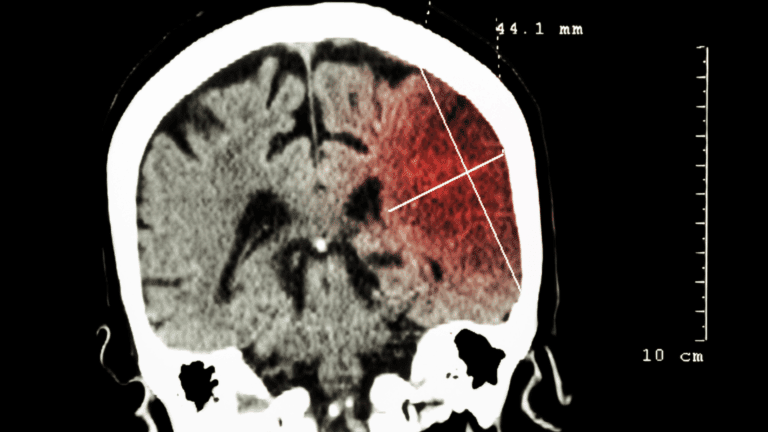Originally published by Hamilton Health Sciences.
Hamilton’s Population Health Research Institute (PHRI) is to the scientific community what Wayne Gretzky is to hockey. Or Celine Dion is to music. Or Rudolf Nureyev to dance. You get the picture.
Yet in spite of being a superstar in the world of research, this joint institute of Hamilton Health Sciences (HHS) and McMaster University is far from being a household name outside of the research world, even though it’s among the largest and most reputable research groups worldwide.
“This is a story no one talks about, and it’s the story that Hamilton residents need to know.”
World-leading health research is happening right here in Hamilton, and has been for years through a critical partnership between HHS and McMaster. PHRI has attracted top-tier research and medical talent to Hamilton for many years, created hundreds of well-paying jobs, managed hundreds of millions of research dollars, and made cutting-edge discoveries benefiting patients locally and globally.

Hertzel Gerstein
Dr. Hertzel Gerstein is a leading diabetes researcher who helped found PHRI 25 years ago. He was PHRI’s deputy director for 15 years, and is a longstanding PHRI researcher and HHS physician. Earlier this year became the institute’s interim executive director. Prior to Gerstein, the PHRI was led by Dr. Salim Yusuf who built it into the word-class research institute that it is today.
Gerstein’s goals moving forward include sharing why Hamiltonians should be especially proud to have the PHRI – a crown jewel of research – in their hometown.
“PHRI’s research helps patients. It helps the city. It helps the country, and it helps the world,” says Gerstein. “I think that’s a huge story that needs to be shared widely.”
A city jewel
Celebrating 25 years, PHRI employs about 300 staff, as well as close to 60 researchers exploring cardiovascular disease, diabetes, kidney and lung diseases, brain health, cancer and more.
It conducts research in over 100 countries on six continents, with 1.5 million people involved in up to 100 studies. It’s a world leader in large clinical trials, population health studies and epidemiology – the study of how, when and why diseases occur and who’s at the greatest risk.
PHRI’s researchers have transformed health care nationally and globally, benefitting tens of millions of people.
Celebrating 25 years
In November, PHRI is celebrating its 25th anniversary with a two-day international symposium highlighting its many achievements and contributions over the past quarter century. Here are just a few of the many achievements and accomplishments of PHRI researchers that will be celebrated:
- Affordable heart disease prevention: A low-cost combination pill, known as the polypill, was shown to reduce heart attacks and deaths by one third, and it’s now included in the World Health Organization’s (WHO) essential medicines list.
- Heart protection: The drug ramipril, as well as related drugs, can significantly reduce heart attacks, strokes, and heart-related deaths in high-risk individuals. This led to approvals in over 40 countries and inclusion in guidelines for cardiovascular prevention.
- Better heart attack treatment: Adding the medication clopidogrel to aspirin for patients with acute heart issues significantly lowers the risk of heart attacks, strokes, and heart-related deaths. This combination was incorporated into practice guidelines and received widespread regulatory approvals around the world.
- Understanding heart attack risks: PHRI researchers identified nine major risk factors that are responsible for over 90 per cent of heart attacks globally, leading to their inclusion in health guidelines by the World Health Organization.
- Identifying stroke risks: Ten simple risk factors were found to be associated with about 90 per cent of strokes worldwide, and these findings are now part of global health guidelines.
- Global heart health insights: Cardiovascular disease and death rates are higher in poorer countries and rural areas, even though they have fewer risk factors. This may be due to lower education and limited access to basic, proven treatments. Major risk factors include both indoor and outdoor air pollution.
- Preventing strokes in atrial fibrillation patients: Drugs like dabigatran and apixaban, and combinations like clopidogrel with aspirin, better prevent strokes compared to older treatments for patients with irregular heartbeats.
- New blood thinner strategy: A new strategy combining low-dose rivaroxaban with aspirin optimally reduces heart attacks, strokes, amputations, and deaths in certain heart patients. This approach is now widely approved.
- Reducing stroke risk during heart surgery: For patients undergoing heart surgery, an additional procedure to close a small part of the heart significantly reduces stroke risk. This is now a top recommendation internationally.
- Heart vessel treatment post-attack: Treating all suitable blocked heart vessels after a heart attack, rather than just the one causing the attack, significantly reduces the risk of further heart attacks or death. This is now a top recommendation internationally.
The best patient care
PHRI researchers include medical doctors, who care for patients at HHS and St. Joseph’s Healthcare Hamilton. This means that our region’s patients are being cared for by some of the best doctors in the country – doctors who are also involved in leading-edge research aimed at finding new treatments and cures. As a result, Hamilton patients are often the first to benefit from innovative new treatments aimed at prolonging life and curing diseases. Patients are critical to this research, and are encouraged to ask their specialists about research opportunities.
“PHRI’s research helps patients. It helps the city. It helps the country, and it helps the world.”
“The message for patients is that there’s this jewel of a research institute here, which attracts the best and brightest researchers who are also caring for them as their doctors,” says Gerstein. “This is a story no one talks about, and it’s the story that Hamilton residents need to know.”
The ultimate win-win-win
As well as being PHRI’s interim executive director, Gerstein is also a senior scientist whose focus is diabetes research and who has designed and led many international trials over the years that have transformed the way this disease is managed throughout the world. He’s also the medical director of the diabetes care and research program at the Boris Clinic, a joint outpatient clinic of HHS and McMaster University for adult patients with complex health problems.
Gerstein grew up in Toronto and went to medical school there. He wanted to be an endocrinologist, treating conditions like diabetes, thyroid diseases and metabolic disorders, as well as a researcher discovering new treatments for these patients. After completing a masters in epidemiology at McMaster, he was recruited here as a clinician and researcher.
“I stayed in Hamilton because McMaster University, HHS and St. Joe’s had built a culture that was extremely welcoming to researchers,” says Gerstein. “Most importantly, it encouraged new and innovative ways of thinking.”
Instead of being restricted to their own areas of expertise, the Hamilton culture minimized institutional and departmental barriers to collaboration across different fields.
“For example, I’m a diabetes specialist, but most of my research has focused on heart disease, and specifically the interface between diabetes and heart disease, and more recently cognitive decline,” says Gerstein.
“In turn, this has fostered the new ways of thinking about diabetes and diabetes-related research. In the end, the HHS-McMaster-St. Joe’s ecosystem makes Hamilton a great place to do research and a great place to practise medicine. And that’s the ultimate win-win-win story for patients, for researchers, and for our city. ”
Originally published by Hamilton Health Sciences.



